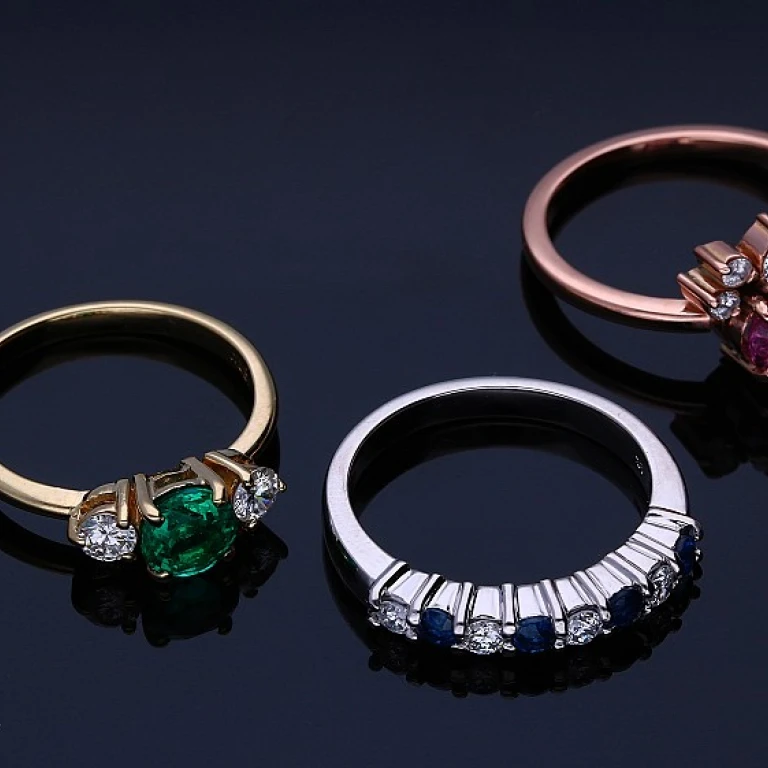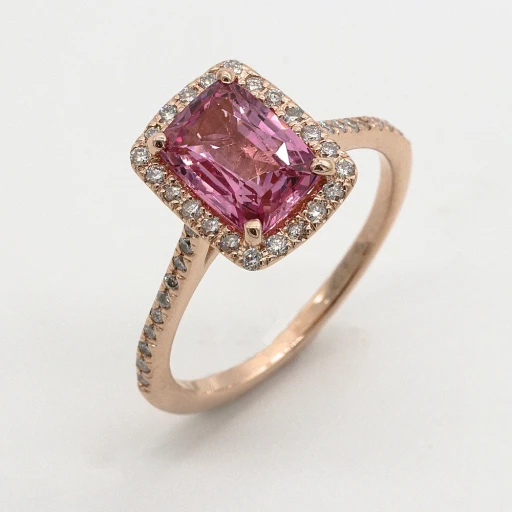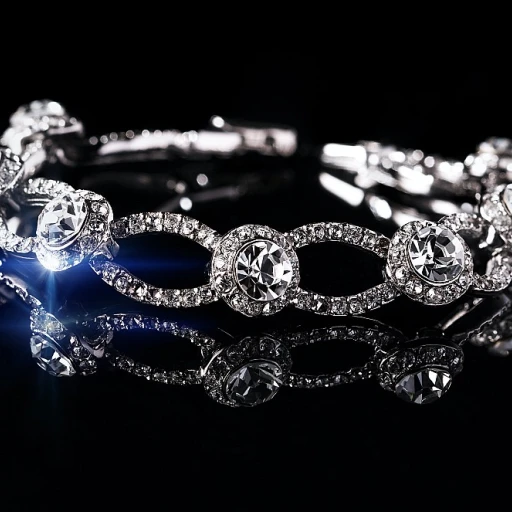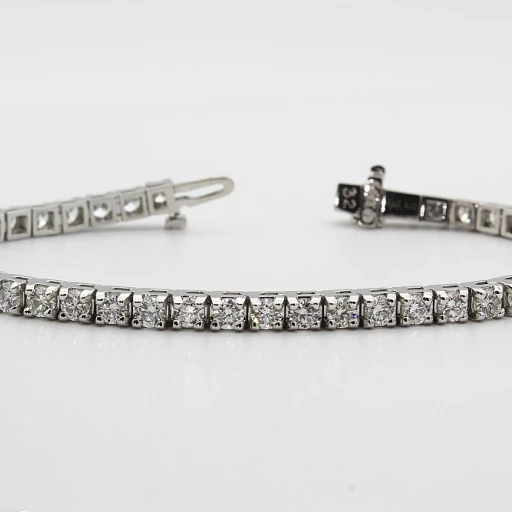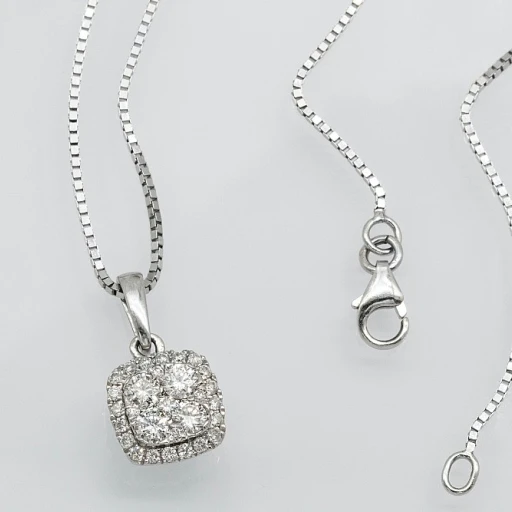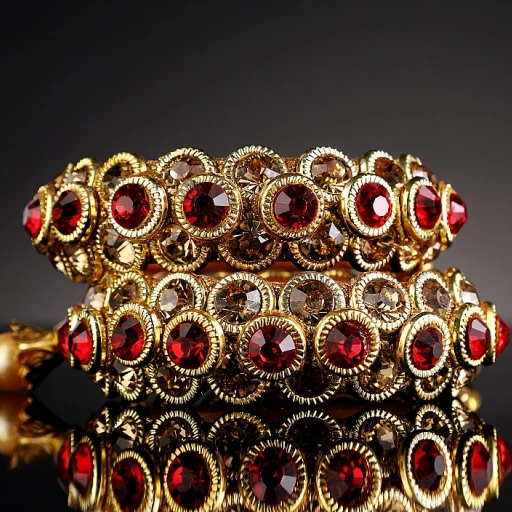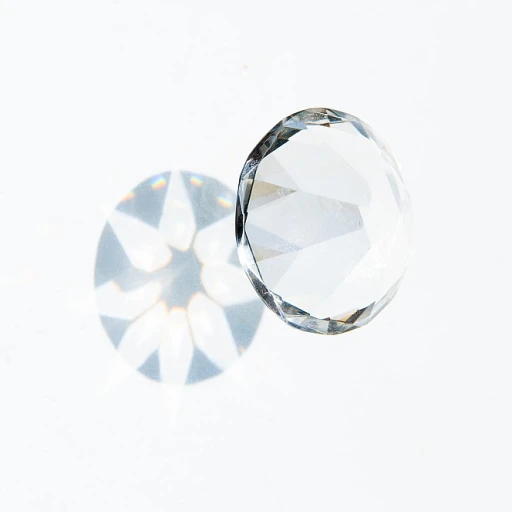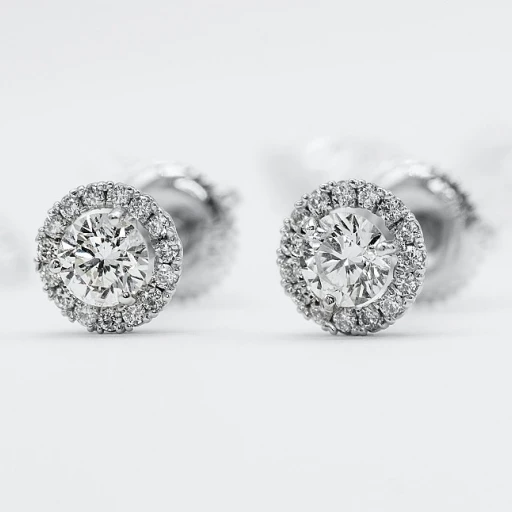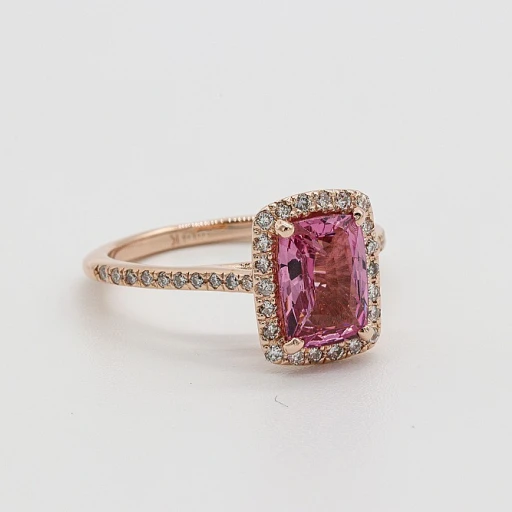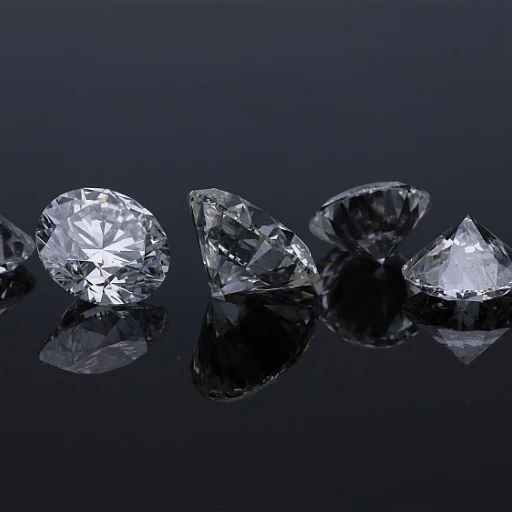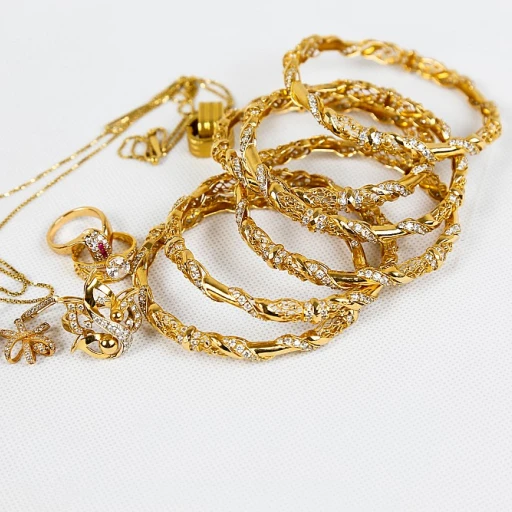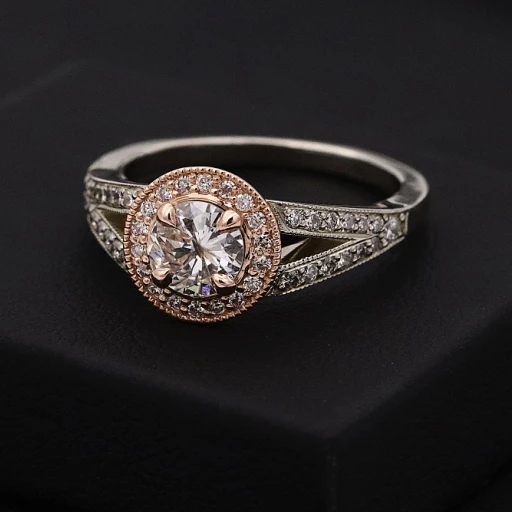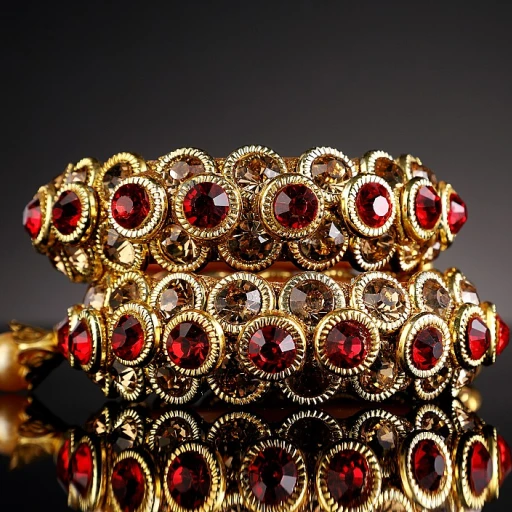
Understanding Lab-Created Diamonds
Lab-Created Diamonds: Redefining Luxury
Lab-created diamonds have taken the fine jewelry world by storm, offering an innovative alternative to the traditional mined diamond. Developed through cutting-edge technology, these gems are virtually indistinguishable from their natural counterparts. They possess the same physical, chemical, and optical properties, making them an attractive option for those seeking beauty without compromise. The process of creating these diamonds involves mimicking the earth’s environment where diamonds naturally form. This high-tech method ensures that lab-grown diamonds, whether for engagement rings or wedding bands, are as authentic as those from a mine. One of the greatest advantages of lab-created diamonds is their variety. From round diamonds perfect for a classic band to unique shapes like marquise, the options are endless. These diamonds can be set in metals such as gold variations including white, yellow, and rose gold, or even platinum, allowing for a wide range of custom designs that cater to individual tastes. In addition to their beauty and authenticity, lab-grown diamonds offer a level of customization that is perfect for any occasion, be it a wedding band or an engagement ring. With the flexibility to choose metal types like gold white or gold platinum, along with the diamond's cut and band design, one can create a truly personalized piece that celebrates their unique story. For more insights on diamond-ring trends, explore our article on the allure of a 2-carat marquise diamond ring here, where we delve into how styles evolve and consumer preferences shift over time.The Ethical and Environmental Benefits
The Promise of Sustainability
Lab-created diamonds bring a sense of ethical integrity and environmental responsibility to the forefront of the fine jewelry market. Unlike their mined counterparts, these diamonds are created in controlled laboratory settings, significantly reducing the environmental degradation associated with traditional diamond mining. This process eliminates the need for large-scale excavation, preserving natural landscapes and ecosystems.
Furthermore, lab-grown diamonds are crafted under conditions that promote ethical labor practices. The transparency of the production process ensures that these gemstones are free from the social issues often tied to mined diamonds, offering a pristine alternative for conscientious buyers.
Choosing a lab diamond for your wedding or engagement ring reflects commitment not only to your partner but also to sustainable living. Whether your preference leans towards a white, yellow, or rose gold band, or even a classic platinum setting, you can enjoy peace of mind knowing your cherished piece contributes to positive environmental change.
As sustainability becomes an enduring trend in consumer choices, lab-created diamond rings are increasingly popular among those who seek elegance without ethical compromise. Their impact on the jewelry industry is significant, driving a shift towards more environmentally friendly and ethically sound practices.
Design Versatility and Customization
Exploring Creative Designs and Personalization Options
When it comes to lab-created diamond wedding bands, the possibilities for customization and creative design are virtually limitless. Unlike natural diamonds, the consistency and quality of lab grown diamonds enable designers to craft intricate designs without the limitations that sometimes accompany mined stones.- Wide Range of Metal Choices: Couples can choose from a variety of metals such as gold, platinum, or a combination of both to create a stunning wedding band. Options include classic yellow gold, striking white gold, and the increasingly popular rose gold. Each choice complements the brilliance of lab grown diamond rings while allowing the couple to express their individuality.
- Customization Options: Personal touches are a significant advantage of lab-created diamond wedding bands. Whether you prefer a vintage-inspired wedding band design or a modern twist with mixed metal elements, the flexibility in design and materials means you can create a unique piece that resonates with your style and values.
- Variety of Diamond Cuts and Settings: From timeless round brilliant cuts to elegant emerald cuts, lab diamonds offer a dazzling array of shapes. The choice of setting too, from pave bands to solitaire settings, adds another dimension for personalization.
- Color Matches: The controlled environment in which lab diamonds are grown ensures consistent color options, be it for a flawless band white or matching a yellow gold or rose gold setting. This versatility in color and style can harmoniously cater to both engagement rings and anniversary bands.
Cost-Effectiveness Without Compromise
Affordability Meets Quality in Lab-Created Diamonds
One of the most appealing aspects of choosing lab-created diamond wedding bands is their cost-effectiveness without compromising on quality. These gems offer the same glimmer and brilliance as natural diamonds but typically come at a fraction of the price. The reduction in cost is attributed to the controlled environment in which they are grown, allowing for less expensive production processes.
When considering a lab-created diamond wedding band, many couples have the opportunity to invest in higher-grade metals such as platinum, white gold, yellow gold, or even rose gold. By opting for a lab-grown diamond, buyers often find their budget stretches further, permitting customization that might include intricate designs or a choice of metal, enhancing the overall aesthetic of their chosen wedding band or engagement ring.
Moreover, lab-created diamonds permit an exploration of various cuts and sizes, from round diamonds to more unique shapes. This provides a wonderful opportunity to select a band that represents personal style without exceeding your budget. For example, a lab-grown anniversary band can be designed with the same elegance and finesse as its natural counterpart but at a customizable price point.
In the realm of wedding bands and engagement rings, lab-created diamonds truly offer an economic advantage, presenting the same enduring symbol of love and commitment as natural diamonds, with the added benefit of budget flexibility. While the price of natural diamonds often escalates rapidly with size and quality, lab-created options allow for an indulgence in quality without the hefty price tag.
Market Trends and Consumer Preferences
Emerging Patterns and Buyer Behaviors
The market for lab-created diamond wedding bands is experiencing a notable surge, driven by both ethical considerations and the financial sensibility these diamonds offer. As buyers become more aware of the sustainable nature and environmental advantages of lab-grown diamonds, the demand continues to increase. This trend is prompting fine jewelry brands to expand their collections to include more lab-created options alongside traditional offerings. Several significant patterns have emerged as part of this market shift:- Diverse Metal Choices: Buyers are often choosing accompanying metals that match the modern sensibilities of lab diamonds. The popularity of white gold, yellow gold, rose gold, and even platinum settings in engagement and wedding rings is unmistakable. Each metal brings its own charm, such as the classic appeal of white gold or the warm tone of rose gold.
- Customization and Personalization: Couples are gravitating towards design versatility, where they can personalize their rings in terms of metal choices and diamond cuts. Many opt for a classic round shape, but there is also enthusiasm for unique cuts like marquise or oval, as referenced in their preferences for engagement rings.
- Price Sensitivity: Cost-effectiveness is another core advantage, as lab-created diamonds often retail at a more accessible price point compared to their mined counterparts. This is encouraging a broader range of consumers to consider grown diamonds for significant life moments such as weddings and anniversaries.
- Increasing Availability: The growing appeal and consumer preference is compelling more jewelers to stock lab-grown diamonds. This expanded availability makes it easier for consumers to compare prices and options between natural and lab-created diamonds, choosing what best fits their style and budget.
Care and Maintenance Tips
Preserving the Beauty of Your Investment
Maintaining your lab-created diamond wedding band is crucial in preserving its beauty and longevity. As with gold variations such as yellow gold, white gold, and rose gold, proper care ensures that your band maintains its luster and brilliance. Whether your ring is crafted from traditional metal like platinum or a modern alloy of gold platinum, there are universal tips to keep it looking its best.- Regular Cleaning: Cleaning your lab-grown diamond band helps remove dirt and oils that can dull its sparkle. Use a gentle, non-abrasive cleaner or a mild soap solution, and a soft brush to clean the intricate settings surrounding the round diamonds.
- Avoid Hard Impacts: Despite being one of the hardest materials, diamonds—whether lab-created or natural—can still chip or fracture if subjected to a strong impact. Remember, this holds for rings made with any metal, be it band white or yellow gold.
- Mind the Metals: Each metal type has unique properties. Rose gold and yellow gold bands may scratch more easily than a platinum ring. Regular polishing by a professional jeweler can help maintain their original texture and sheen.
- Storage Solutions: Store your engagement rings and wedding bands in a soft pouch or lined jewelry box to prevent scratching. Storing each piece separately helps prevent metal white or gold yellow bands from coming into contact with each other, preserving their finish.
